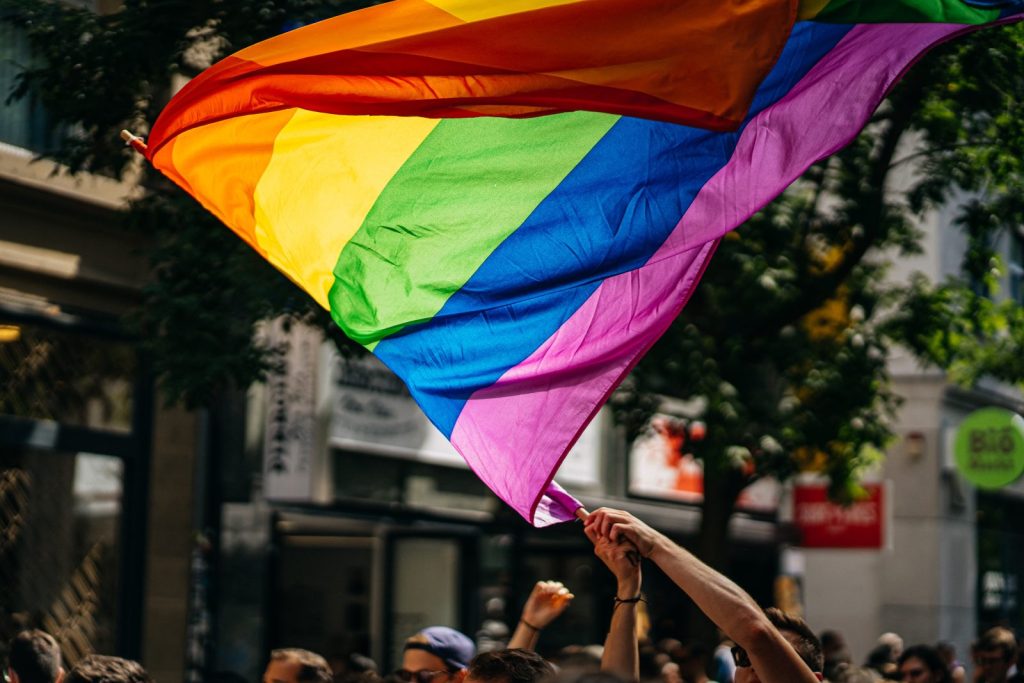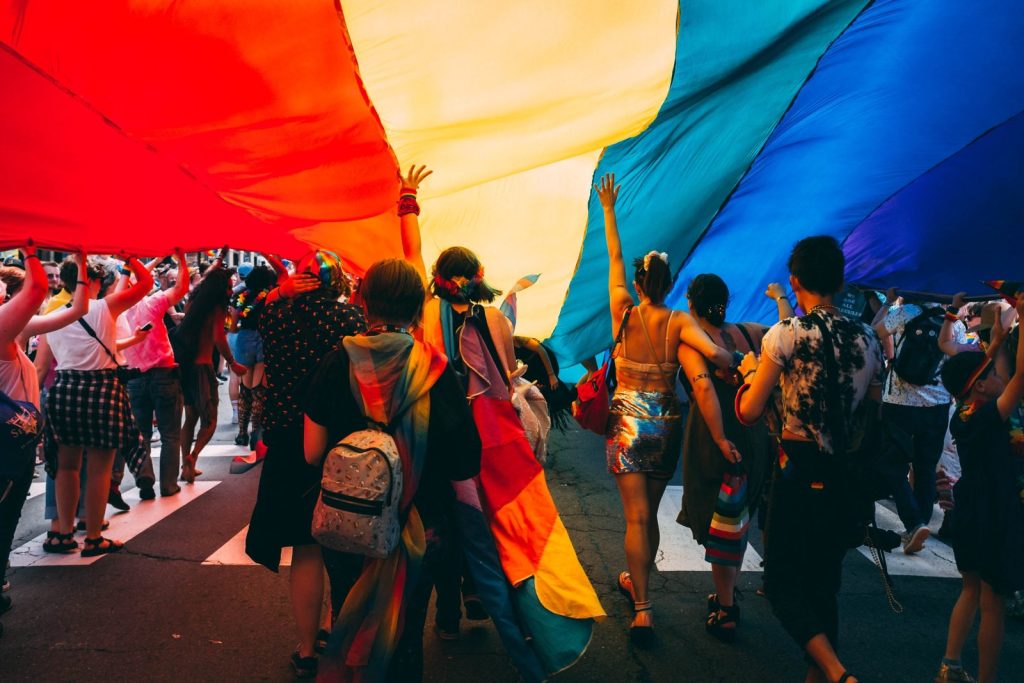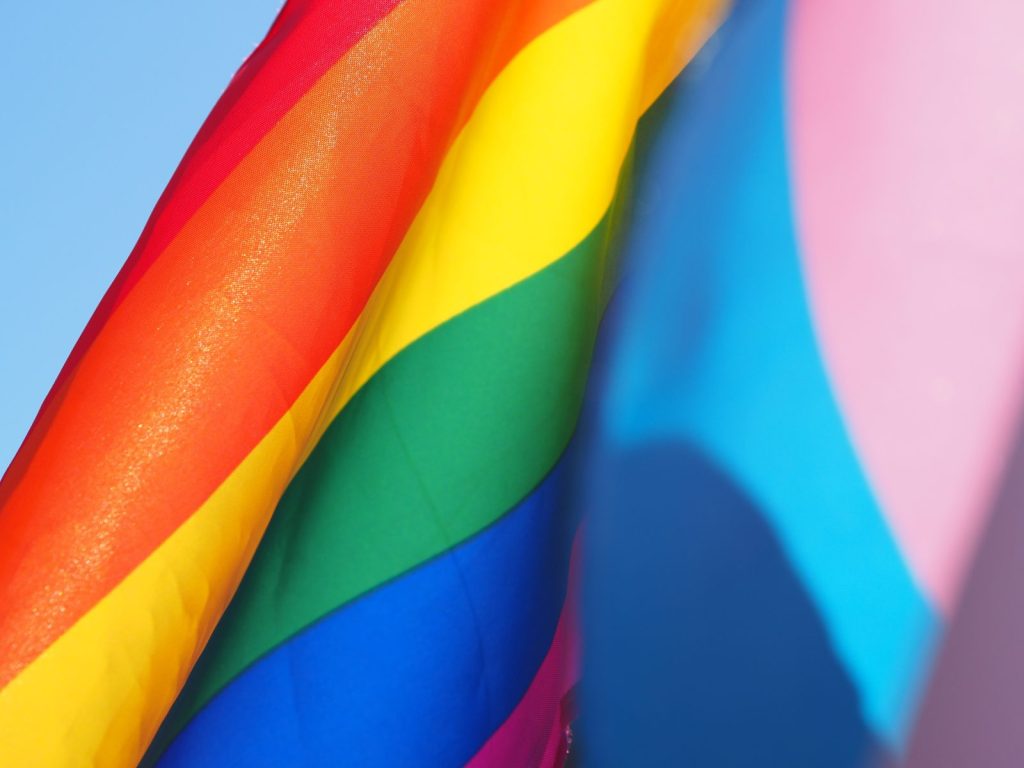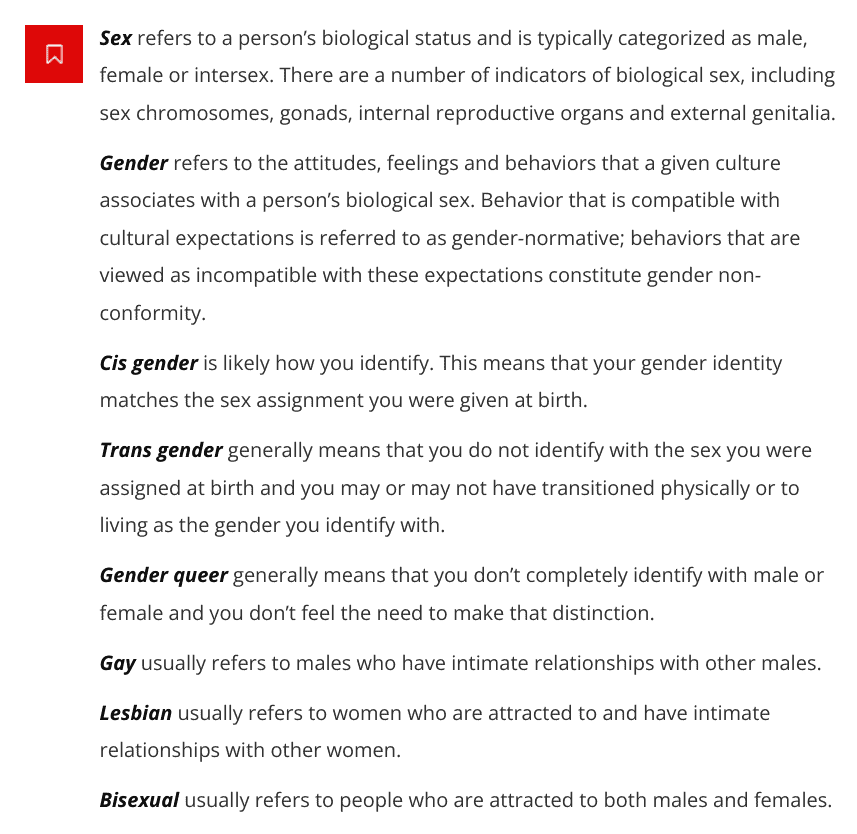Happy Pride Month! You may find that this blog is more relevant than our usual stuff. Feel free to click away or read on with an open mind.
A Quick LGBTQ+ History
There is evidence of individuals living LGBTQ+ lifestyles throughout history. For example, many indigenous communities accepted and sometimes celebrated diverse genders and sexual orientations. According to the Human Rights Campaign,
“Research shows that more than 150 different pre-colonial Native American tribes acknowledged third genders in their communities. And that may have been a unifying feature of different pre-colonial cultures. Historians have also documented the highly regarded role of spiritual leaders in pre-colonial West Africa who were assigned male at birth but presented in a feminine manner, the existence Muxes in Zapotec culture in what is now Southern Mexico, Bakla in pre-colonial Philippines and Hijra in South Asia. All of these individuals were assigned male at birth but their gender expression and/or community role was more feminine (HRC 2020).” It should be clarified that “By no means did all pre-colonial Native American communities accept or celebrate gender and sexual orientation diversity (HRC 2020).”
Moving forward in time, the US Supreme Court’s ruling in Obergefell v. Hodges on June 26, 2015, marked the official beginning of complete marital equality. Marriage equality subsequently became the law of the land, granting same-sex couples in all 50 states the right to full and equal legal recognition (HRC 2015). Barack Obama would later remark that the passage of one of the most significant LGBTQ+ laws in the country “made our union a little more perfect (Office of the Press Secretary 2015).”
Amongst all these advances, our world still experiences diminishing progress for the LGBTQ+ community. Transgender bans in the U.S. have come to light as laws that disproportionately affect the rights and access of transgender people to essential healthcare services. These restrictions continue detrimental stigmatization and marginalization. These restrictions also prevent transgender people from living authentically, which can have a negative impact on their mental health, general well-being, and overall quality of life (American Civil Liberties Union 2023). The fight for equality is larger than just marriage equality. There is still work to be done!

The Q Word
Starting in late 1800 through the early 1900s the word “Queer” was being used to identify LGBTQ+ folks in a derogatory way. Before this shift in vocabulary, queer had only been used as a synonym for “strange” or “odd.” Starting in the 1980’s LGBTQ+ activist groups began reclaiming the word (Clarke 2021). To reclaim a slur means to bring a word that was once derogatory back into acceptable usage. Usually, this process begins within the communities that the word was originally intended to denigrate before spreading to the general public. Queer has gained widespread acceptance among the LGBTQ+ community throughout time, and some LGBTQ+ folks frequently use it in place of the typical terminology for identifying one’s same-sex attraction or gender identity.
Today, the modern definition of queer looks more like this:
“Queer is an umbrella term for people who are not heterosexual or cisgender.”
Although many people now accept the term “Queer,” certain members of the LGBTQ+ community may still find it offensive. The word “Queer” will be used throughout the remainder of this blog. Please know that by no means is it being used in a derogatory sense.
Queer Touch
According to queer massage therapist, Kars Dodds, “you should know that queering the health and wellness industry is good for everyone, whether or not they identify as queer (Dodds 2023).” Dodds states that massage has 6 innately queer pillars, which are listed below.
- Desexualizes intimacy.
- Centers bodies as a place of delivering pleasure.
- Welcomes many ways of being, living, looking.
- Centers the experience of the individual within their body, not the medicalized or taught experience of the practitioner. This is CRUCIAL to a trauma and queer-informed environment!
- Allows the receiver to take up space within the presence of another in a judgment-free zone.
- Consent and communication are valued and taught expectations of the experience (Dodds 2023).
You may look at these pillars and not understand why they would be considered queer. Aren’t these things normally practiced by straight therapists too? The answer is yes, most massage therapists practice these things. Dodds is not referring to the LGBTQ+ community, but rather to something called queer theory.
According to the Indiana University of Bloomington, “Queer Theory is an interdisciplinary field that encourages one to look at the world through new avenues. It is a way of thinking that dismantles traditional assumptions about gender and sexual identities, challenges traditional academic approaches, and fights against social inequality. For many academics, queer theory provides a lens through which they can “queer” ideas in their own disciplines. In this way, “queering” is not always about imposing queerness on an area but about utilizing the lenses of queer theory to imagine new, previously unidentified possibilities (Indiana University Bloomington 2020).” If you are interested in learning more about Queer Theory, please click here.
Based on the 6 pillars uplifted by Dodds, many of the regular practices of massage therapy are queer and therefore can benefit many diverse people. Due to its versatility and guiding principles, massage therapy is a strong contender for self-care in every community, including the LGBTQ+ community.

Why LGBTQ+ Folks Need Massage
As stated above, massage therapy holds significant importance for the queer community as it provides a safe and inclusive space for individuals to receive healing touch and support their overall well-being. For many queer individuals, finding inclusive healthcare spaces can be a challenge, as they may face discrimination or discomfort in traditional settings. Massage therapy offers a unique opportunity for queer individuals to access holistic care in a non-judgmental environment, where their identities and experiences are respected and affirmed.
Massage therapy can play a crucial role in addressing the specific needs and challenges faced by the queer community. Many queer individuals experience higher levels of stress, anxiety, and mental health issues due to societal pressures, discrimination, and the struggle for acceptance. Massage therapy can help alleviate these stressors by promoting relaxation, reducing anxiety, and enhancing overall mental well-being. Additionally, massage can provide relief from physical discomforts that may arise from gender-affirming surgeries or hormone therapies, as well as offer support in healing from trauma or body dysphoria.
Furthermore, massage therapy offers a space for queer individuals to reclaim agency over their bodies, which is particularly significant for those who have experienced marginalization or a lack of bodily autonomy. Through compassionate touch and personalized care, massage therapists can create a nurturing environment that fosters self-acceptance, self-love, and body positivity. By affirming the inherent worth and beauty of queer bodies, massage therapy can empower individuals to reconnect with their bodies, fostering a sense of wholeness, balance, and self-empowerment within the queer community.
“Caring for myself is not self-indulgence, it is self-preservation, and that is an act of political warfare.” – Audre Lorde
Overall, massage therapy serves as a valuable tool for the queer community, providing a safe, inclusive, and affirming space that supports their physical, emotional, and mental well-being. By offering therapeutic touch, stress relief, and body acceptance, massage therapists can contribute to the holistic health and resilience of queer individuals, promoting their overall quality of life and affirming their identities and experiences.
Signs You Found an LGBTQ+ Allied Massage Therapist
- LGBTQ+ friendly massage therapists often use inclusive language in their advertising and marketing materials. They may specifically mention their support for LGBTQ+ clients, use gender-neutral terms, or display symbols or images that indicate inclusivity.
- An LGBTQ+ friendly massage therapist will create a safe and welcoming space for clients of all sexual orientations and gender identities. They will treat you with respect, dignity, and acceptance, fostering an environment free from discrimination or bias.
- A supportive massage therapist will have an understanding of LGBTQ+ health concerns, such as gender dysphoria, hormone therapy, or specific physical needs related to queer bodies. They will be knowledgeable about appropriate techniques, modifications, and considerations to ensure your comfort and well-being during the session.
- An LGBTQ+ friendly massage therapist values informed consent and open communication. They will listen attentively to your concerns, ask relevant questions about your health and preferences, and encourage you to communicate any specific needs or boundaries. They prioritize your comfort and will adapt their approach accordingly.
Remember, finding an LGBTQ+ friendly massage therapist may also involve personal recommendations from friends, online research, or reaching out to local LGBTQ+ community centers or organizations for referrals. Trust your instincts and choose a massage therapist who makes you feel comfortable, respected, and affirmed in your identity.

Advice for LGBTQ+ Allied Massage Therapists
- As an LGBTQ+ allied massage therapist, it’s important to actively create a safe and inclusive practice for your LGBTQ+ clients. Use inclusive language in your communication and marketing materials, display LGBTQ+ symbols or imagery in your workspace, and make it clear that you are an ally. Foster an environment that welcomes and respects clients of all sexual orientations and gender identities.
- Take the time to educate yourself about the unique health concerns and experiences of LGBTQ+ individuals. Familiarize yourself with terminology (a vocabulary sheet is listed below), issues related to gender identity and expression, and the specific needs of queer bodies. Consider pursuing additional training or certifications that focus on LGBTQ+ health and wellness to enhance your knowledge and skills in this area.
- In a Massage Magazine article titled Be an Ally to the LGBTQ Community—and Not Just during Pride Month, Amber Briggle suggests to “Include a space for clients to specify their pronouns on your intake forms. Don’t assume someone’s pronouns, and make a habit of introducing yourself with your pronouns as well. Document your clients’ pronouns so your colleagues know how best to address them, too. Wearing a pin or button with your pronouns on it is another way to signal your allyship, while also normalizing pronoun introductions (Briggle 2022).”
- Establish open and respectful communication with your LGBTQ+ clients. Create a safe space for them to share their concerns, preferences, and any specific needs related to their identities or experiences. Respect their boundaries and always obtain informed consent before starting a session. Regularly check in with your clients to ensure their comfort and adjust your techniques or approach as needed.
- According to East West College of the Healing Arts, “Don’t make assumptions about family structure. Unfortunately, LGBTQ individuals may suffer estrangement from their birth families. Consider asking, ‘Is it okay for me to ask about your family?’ Or skip this off-topic chit-chat altogether and stick to questions about treatment” (East West College of the Healing Arts 2021)
- Those at East West College of the Healing Arts also give this advice, “Couples massage is wonderful for romantic partners, friends, and family members alike. Don’t make assumptions about romantic couplings. In this and all aspects of your practice, allow the client to decide what they would like to share with you” (East West College of the Healing Arts 2021).
- Owner of A Room of Our Own Massage, Caitlin Eichorn, voices her opinions on draping for gender-diverse individuals. “In massage school, we are taught to drape men and women’s bodies differently, which forces us to make inappropriate decisions based on our assumptions about their bodies rather than their identities (because we aren’t allowed to expose breast tissue, for example, but can work on an undraped male chest). To combat this, we use gender-neutral draping with all our clients, keeping the chest and stomach fully covered. You are always welcome to wear as much clothing as you need to feel comfortable. We will either work over your clothing, or avoid that area of your body, depending on your comfort level. With all our draping, we uncover only the area of your body that we are working on (Eichorn 2022).”
- Use your position as an LGBTQ+ allied massage therapist to be an advocate and resource for your clients. Stay informed about LGBTQ+ rights and local LGBTQ+ resources. Provide information or referrals to support networks, counseling services, or healthcare professionals who specialize in LGBTQ+ health if needed. Be an ally beyond the massage session by supporting LGBTQ+ causes and promoting inclusivity in your community.

By embodying these principles, you can create a safe and supportive space for LGBTQ+ clients, allowing them to receive the benefits of massage therapy while feeling respected, affirmed, and understood.
Closing
The empowerment and health of LGBTQ+ people in our communities may be greatly improved by massage therapy. Massage therapists can assist the physical, emotional, spiritual, and mental health of LGBTQ+ people. Massage therapy creates safe and accepting environments, addresses the unique needs of LGBTQ+ people, and promotes acceptance and self-care. In a way that massage therapists are already (maybe unknowingly) prepared for, massage therapy delivers a healing touch that welcomes the different experiences and identities within the LGBTQ+ community.
Thank you to all of the people who contributed information for this blog! We hope to have an interview or two with LGBTQ+ Allied Massage Therapists within the next few months. Stay tuned!
Resources
American Civil Liberties Union. 2023. “Mapping Attacks on LGBTQ Rights in U.S. State Legislature.” American Civil Liberties Union. April 18, 2023. https://www.aclu.org/legislative-attacks-on-lgbtq-rights.
Briggle, Amber. 2022. “Be an Ally to the LGBTQ Community—and Not Just during Pride Month [Guest Editorial].” MASSAGE Magazine. June 18, 2022. https://www.massagemag.com/be-an-ally-to-the-lgbtq-community-and-not-just-during-pride-month-guest-editorial-129558/.
Clarke, Mollie. 2021. “The National Archives – ‘Queer’ History: A History of Queer.” The National Archives Blog. February 9, 2021. https://blog.nationalarchives.gov.uk/queer-history-a-history-of-queer/.
Dodds, Kars. 2023. “6 Innately Queer Values of Massage.” Kars Dodds | Holistic Queer Wellness. 2023. https://www.karsdodds.com/blog/massage-is-queer.
East West College of the Healing Arts. 2021. “Celebrate Pride Month by Making Your Massage Practice LGBTQ-Friendly.” East West College of Healing Arts. June 17, 2021. https://www.eastwestcollege.com/celebrate-pride-month-by-making-your-massage-practice-lgbtq-friendly/.
Eichorn, Caitlin. 2022. “For LGBTQIA+ Clients.” A Room of Our Own Massage. 2022. https://www.aroomofourownmassage.com/lgbtqia-clients.
Human Rights Campaign. 2015. “The Journey to Marriage Equality in the United States.” Human Rights Campaign. 2015. https://www.hrc.org/our-work/stories/the-journey-to-marriage-equality-in-the-united-states.
Human Rights Campaign. 2020. “Two Spirit and LGBTQ Idenitites: Today and Centuries Ago.” HRC. November 23, 2020. https://www.hrc.org/news/two-spirit-and-lgbtq-idenitites-today-and-centuries-ago.
Indiana University Bloomington. 2020. “Library Research Guides: Philosophy: Introduction to Queer Theory.” Guides.libraries.indiana.edu. 2020. https://guides.libraries.indiana.edu/c.php?g=995240&p=8361766#:~:text=Queer%20Theory%20is%20an%20interdisciplinary.
Office of the Press Secretary. 2015. “Remarks by the President on the Supreme Court Decision on Marriage Equality.” Whitehouse.gov. June 26, 2015. https://obamawhitehouse.archives.gov/the-press-office/2015/06/26/remarks-president-supreme-court-decision-marriage-equality.
Wood, Gael. 2019. “Is Your Practice LGBTQ-Friendly? How to Create a Welcoming Space.” MASSAGE Magazine. April 10, 2019. https://www.massagemag.com/is-your-practice-lgbtq-friendly-how-to-create-a-welcoming-space-41181/.

